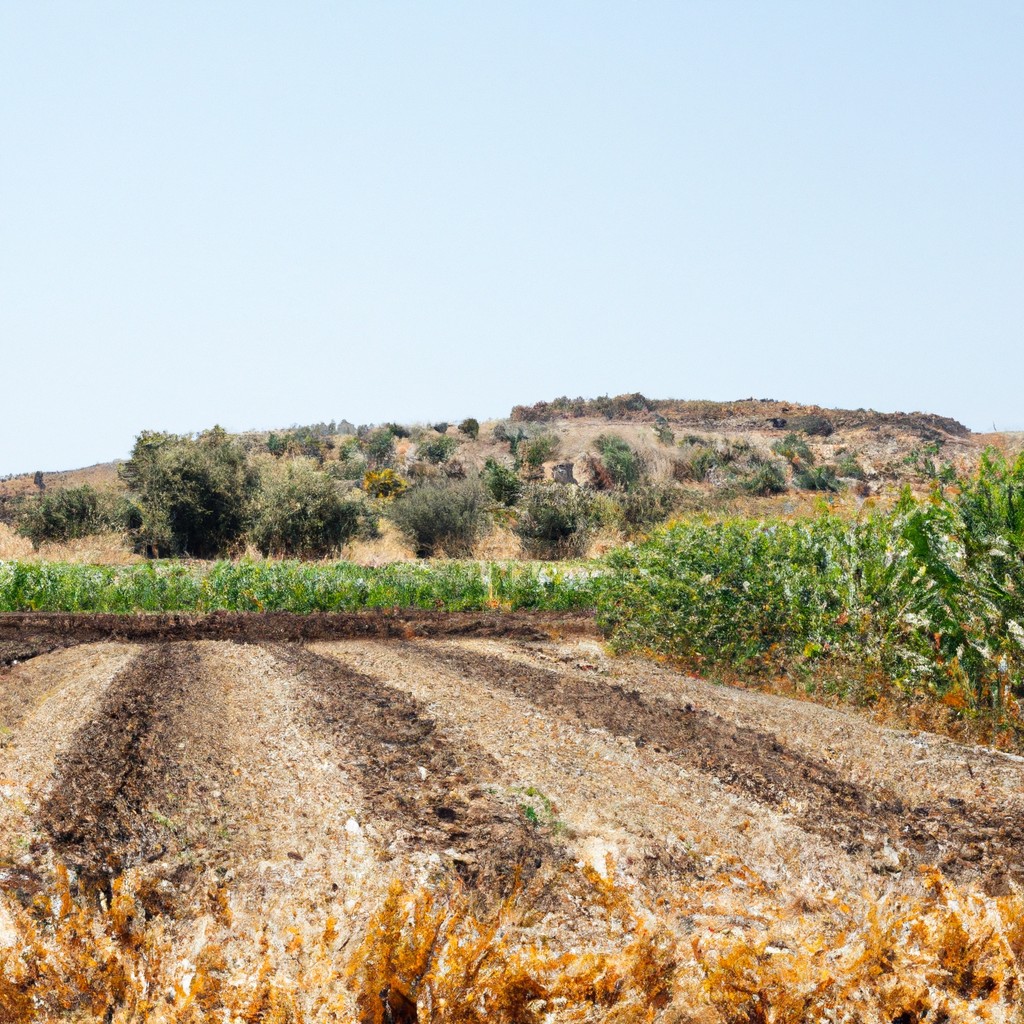Discover the rich history, current practices, and future potential of Greek agriculture in this informative article.
Look Inside:
Current Production

Greek farmers have adapted well to modern practices, blending tradition with innovation. The country’s diverse climate and terrain gift it a variety of crops.
Olives top the charts, dotting the landscape like green gems. They’re not just about those tangy little spheres in your martini but also the liquid gold, olive oil. Think premium, think Greek.
Then there’s the vineyard scene. Wine is serious business in Greece. Modern techniques are combined with ancient practices to produce vintages that make you want to smash plates in sheer joy.
Cereal crops like wheat and barley also have their fields. Bread anyone? Add some feta and you’re halfway to happiness.
Don’t forget the vegetables. Greece’s soil nurtures tomatoes, cucumbers, and onions that make their salads legendary. Not to mention juicy oranges, lemons, and figs.
And, of course, Greece has sheep and goats grazing its hills, giving us milk, cheese, and a bit of that pastoral peace.
Efficiency is key. Many farms now use eco-friendly methods, drip irrigation, and greenhouses, ensuring sustainability while juggling the capricious whims of Mother Nature.
To top it all off, there’s a growing buzz around organic farming. It’s not just a trend; it’s a Greek way of life.
Modern History
Greek agriculture has experienced its fair share of ups, downs, and “what-were-we-thinking” moments over the past few decades. Greece is not just about ancient ruins and tzatziki; its farming practices have evolved with both tradition and innovation in mind.
Post-World War II saw a significant shift as Greece moved from subsistence farming to more commercial practices. This transition wasn’t exactly smooth, like trying to ride a donkey on a bumpy road. The introduction of new technologies helped boost productivity but also presented new challenges, such as environmental concerns and the need for sustainable practices.
The 1980s marked Greece’s entrance into the European Economic Community. Picture Greek farmers elbowing their way into the EEC’s VIP section. This led to modernization efforts, increased subsidies, and better infrastructure but also fostered dependency on external support.
Recently, younger generations have started to embrace organic farming and sustainable practices, shaking things up like a well-tossed Greek salad. This shift is a response to both market demand and a desire to preserve the land for future generations.
In short, Greek agriculture’s modern history is a blend of old-world charm and new-age savvy, making it a fascinating case study in adaptability.
Notable Products
A trip to any Greek market will reveal the country’s agricultural treasures. First, there’s the legendary Greek olive oil, often touted as liquid gold. Drizzled on salads or drenching your bread, it’s bound to make you question your loyalty to butter.
Then, we have the wine. Ah, yes, Dionysus would be proud. From robust reds to crisp whites, the variety of Greek wines, such as Assyrtiko from Santorini and Xinomavro from Naoussa, is nothing short of delightful.
Greece is also home to an array of fresh herbs and spices. Oregano, thyme, and rosemary, to name a few, are staples in Greek cuisine and agriculture. Feast your senses on the aromatic heaven emanating from these herbs.
Don’t forget about honey. Greek honey, particularly thyme honey from Crete, is celebrated for its rich flavor and health benefits. It’s so delicious that the bees might start charging for it.
Lastly, let’s talk about the prized dairy products, especially feta cheese. This crumbly, tangy cheese is a cornerstone of the Greek diet and an integral part of any respectable Greek salad. And it makes you wonder, who needs cheddar, anyway?
Olive Cultivars/Varieties
Greek farmers are practically olive oil wizards, nurturing quite the variety of olive cultivars. Ever heard of the Koroneiki olive? It’s the superstar here, making up the bulk of Greece’s olive oil. Known for being small but fierce, Koroneiki olives pack a punch with high oil content and robust flavor.
Then there’s the Kalamata olive, beloved by salad enthusiasts worldwide. With its plump, almond-shaped appearance and meaty texture, it’s the prima donna of table olives. Kalamata olives don’t just steal the show in Greece; they grace tables internationally.
Let’s not forget about the lesser-known Manaki olives. These are like the introverts of the olive world; they produce a milder, more delicate oil that’s perfect for those less intense moments. Think of it as the gentle jazz to Koroneiki’s rock & roll.
Finally, the Tsounati variety—larger and bolder—thrives particularly well in Crete. Its oil is often celebrated for its fruity undertones, adding a bit of zest to dishes. Greek olive farmers certainly know how to keep our taste buds entertained!
Each of these cultivars contributes a unique chapter to Greece’s olive oil saga, diversifying both flavor profiles and culinary uses.
Trade of Foodstuffs
Greek food exports are like the Hercules of international trade—strong and legendary. Mediterranean diet enthusiasts around the world are scooping up Greek extra virgin olive oil, feta cheese, and honey faster than you can say “Opa!”
- Olive oil and table olives are top exports, riding the waves to Italy, the U.S., and beyond.
- Feta cheese, that crumbly delight, has Europeans hooked, with a big chunk going to Germany.
- Greek wines, especially varieties like Assyrtiko and Moschofilero, are getting their moment in the spotlight, jazzing up dinner tables globally.
- Fresh produce like tomatoes, cucumbers, and oranges are also key players, thanks to Greece’s sunny disposition.
Trade relations are bolstered by agreements with the European Union and individual countries, ensuring these edible treasures reach distant shores. Plus, the Greek agriculture sector gets a boost from diverse trade networks and cooperative associations.




